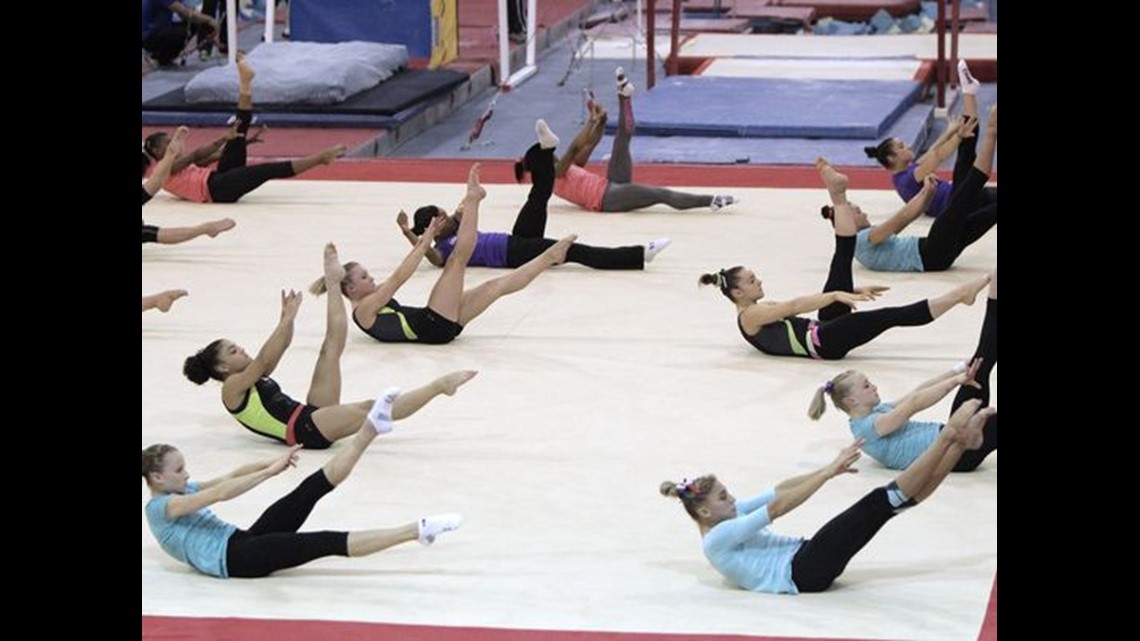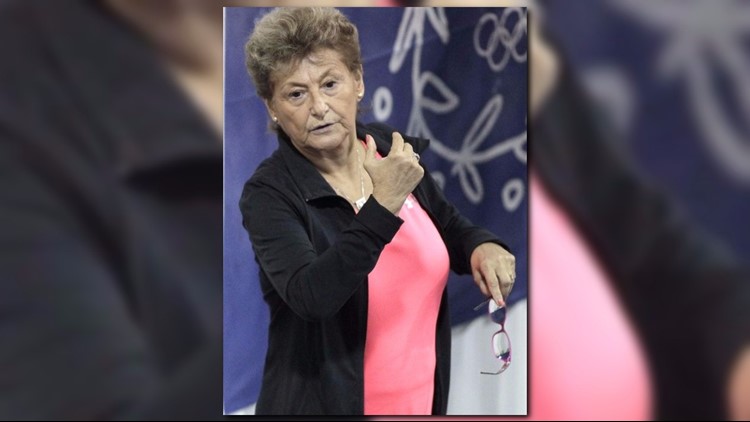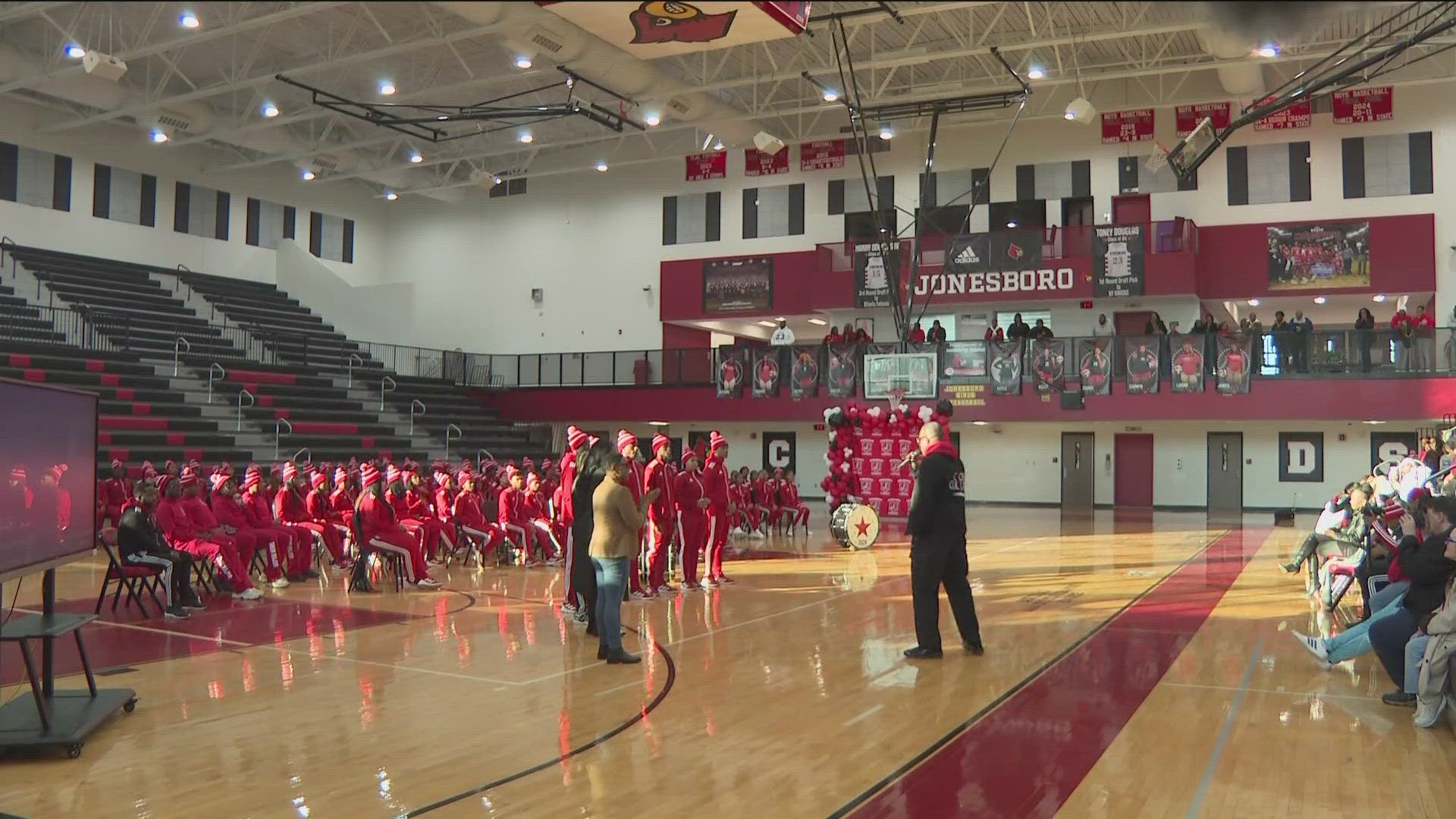NEW WAVERLY, Texas -- To walk around the Karolyi Ranch is to get a sense of U.S. gymnastics history. Photos of Mary Lou Retton and the Magnificent Seven are among dozens that adorn the wall in the gym.
Outside, signs point to the cabins where gymnasts stay when they train here once a month. Each is named for the Olympics where an American won the all-around – Los Angeles, Athens, Beijing, London.
Soon, there is likely to be another, even if Bela and Martha Karolyi won’t be the ones guiding the next generation of American talent. Simone Biles is almost assured of adding Rio to the U.S. all-around streak on Tuesday, but these Games will be the last for Martha Karolyi as national team coordinator.
While it might look like a series of individual accomplishments, it belies a system the Karolyis installed that has made the United States the powerhouse in women’s gymnastics over the past 16 years.
“I’m just excited that this group of girls get to be her last because that’s what people remember the most,” said Biles. “Hopefully we get to carry that legacy on.”
It’s difficult to imagine now with the lofty expectations the American women almost always exceed, but the United States wasn’t always so dominant.
Retton’s all-around gold in 1984 was the first for the country, but it didn’t lead to a major breakthrough. The Magnificent Seven won gold in Atlanta in 1996, and that didn’t lead to sustained success either.
Instead, the program struggled through the latter part of the decade. Rivalry among coaches and an inflated ego lingering from 1996 led to a sixth-place world championships finish three years later.
“There was no one that was accountable,” said Steve Penny, CEO of USA Gymnastics, a vice president at the time.
By then, USA Gymnastics was receptive to the Karolyis’ idea of a semi-centralized system. Rather than have young gymnasts move away from their families to train at one of a handful of top gyms, they would come together as a team once a month at the Karolyis’ ranch in the Sam Houston National Forest in Texas.
The gymnasts would keep their coaches and train at home, and a national team coordinator would be responsible for guiding the program.
Bela Karolyi took the job in 2000, but the longtime coach is a natural showman and a big personality. He and the gymnasts’ coaches butted heads as many struggled to buy into the system.


He stepped aside after the Sydney Olympics and, in 2001, the coaches selected Martha Karolyi to take over. She was more diplomatic, and the coaches respected her decisions even if they didn’t agree with them. Plus, she had an eye for who had the most medal potential, even if it were an unproven gymnast.
“She’s got an uncanny intuition, and I think she’s got a very brilliant mind to figure that out,” says Kelli Hill, who coached Dominique Dawes and Courtney Kupets, among others.
Like many, Hill was initially skeptical of the system.
But Karolyi set standards and applied them fairly. Decisions were made with the best chances for team success in mind.
The foundation is conditioning and fitness. Karolyi expects the gymnasts to be in shape when they come to the ranch, and they go through verification of their skills each camp to measure where they are.
“They had a vision for this,” said Penny. “And Martha loves this job. She’s loved it since the day she started and she still loves it.”
Success quickly followed. The U.S. women won three golds at the 2003 world championships, and a year later Carly Patterson became the country’s second all-around Olympic champion.
Despite the success, criticism has followed from Dominique Moceanu, Chellsie Memmel and a few others who have voiced concerns about the toll it takes on gymnasts’ bodies.
“It doesn’t have to be harsh. It can be positive,” Moceanu said. “You’ll get a lot more out of people when you give that kind of caring and you give that kind of affection, but also tough love.”
For their part, the women on the team now say they know and accept the tradeoff. Elite athletes don’t get to this level without demanding a lot of their bodies.
The system is built on discipline and consistency.
Coaches and gymnasts say that pressure under Karolyi is what makes them better. If you can stand up under her eye for detail, international competition will be no problem. She knows what to push both mentally and physically.
“All of that combined makes for an amazing situation for these athletes because under her eyes in the camp, they’re probably more nervous than they would be in a competition – and that’s the goal,” says Rhonda Faehn, who was coached by the Karolyis in the 1980s and is now the vice president of the women’s program for USA Gymnastics.
The system has allowed the Americans to dominate, winning 88 Olympic and world medals since the Karolyis took over, with all but one coming under Martha Karolyi. They’ve won every team title since 2011. In Rio, there’s more a question of how much they will win the gold medal by rather than if they will. Multiple individual medals are expected to follow.
In addition to molding gymnasts, the system has served as a de facto development program for coaches. Once guarded in sharing information, they now do so freely and help out with each other’s gymnasts at the ranch and in competition.
“There’s a program that has now been created where you have passionate coaches that are working side by side that believe in the process and are trying to live it every day,” says Kim Zmeskal Burdette, a world champion under the Karolyis who is now the coach of alternate Ragan Smith. “There’s enough people in it that will keep moving forward.”
Looking forward rather than back has always been a key to the U.S. success in the system. Karolyi looks at who can deliver now, not who has in the past. Fierce Fivers Aly Raisman and Gabby Douglas are back on this year’s team because they earned it, not because of some sense of obligation to past champions.
Besides, there’s so much talent behind them in the American pipeline that no gymnast can afford to rest on her laurels. For instance, led by Jordan Chiles, the Americans placed first, second, third and fifth at the Jesolo Trophy junior competition in March.
“We permanently have the next generation ready and that’s the key, I think, of the U.S. success,” says Martha Karolyi. “We have a system. We’re not just randomly maybe catching a talented girl. We search. We advocate. We train from a young age.”
Penny and the coaches are confident that system will endure once Karolyi ends her tenure after these Games. The coaches and gymnasts have bought in. And USA Gymnastics has bought 36 acres on the ranch, which has served an official U.S. Olympic Committee training site since 2011.
The Karolyis will still live there. They insist that despite Martha Karolyi’s many near-retirements, this is really it. She’s done, and she won’t be meddling.
In her place, Bela and Martha Karolyi will leave a system that has changed gymnastics in America.
“After 56 years, I believe it’s enough,” says Bela Karolyi. “To be honest, after 10 Olympics Games behind us and another one in front of us, it was a beautiful journey. We enjoyed it very much. But I believe that’s the end.”



